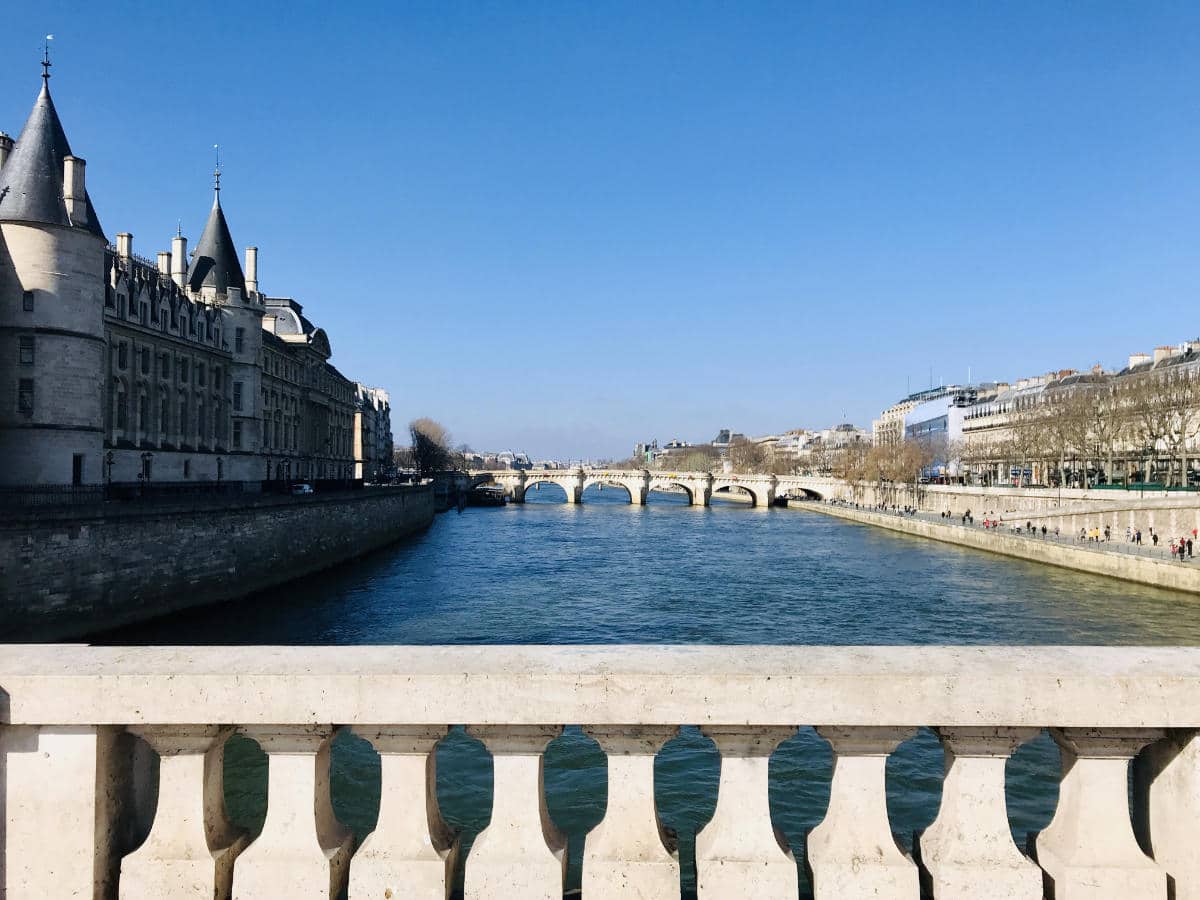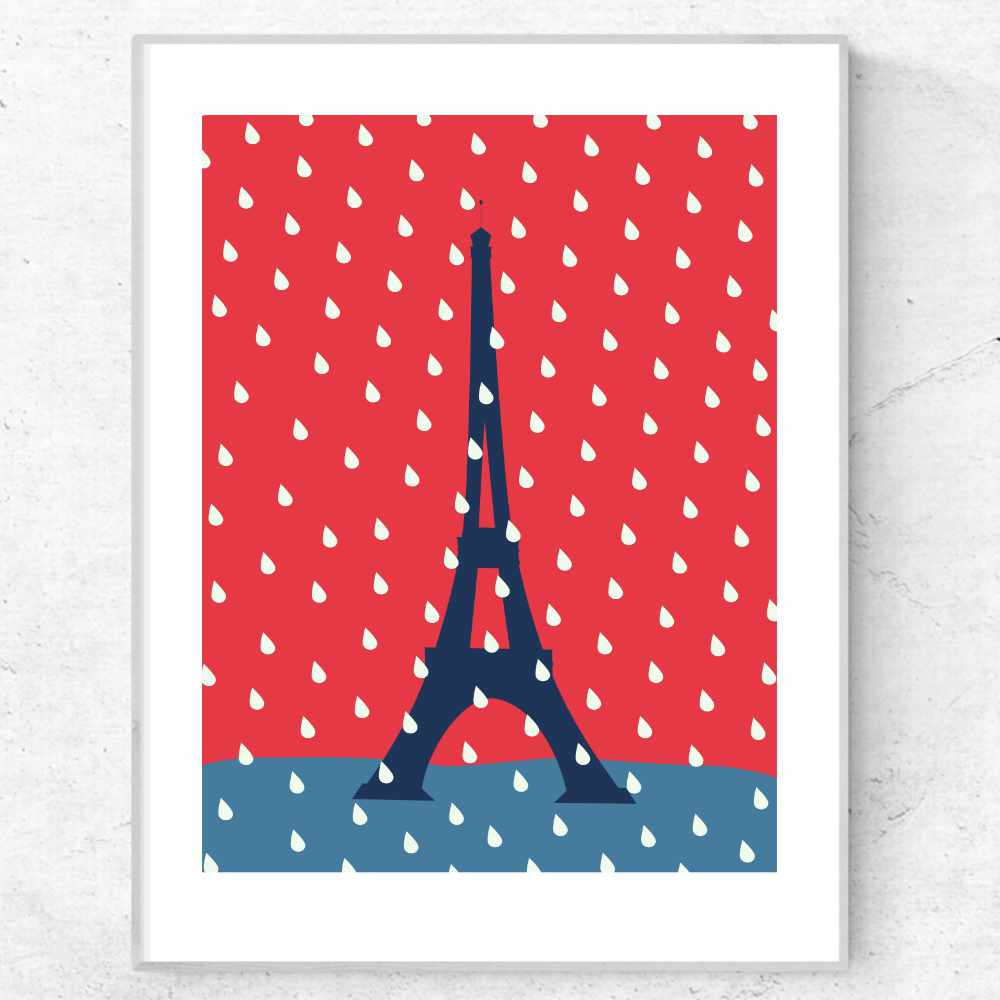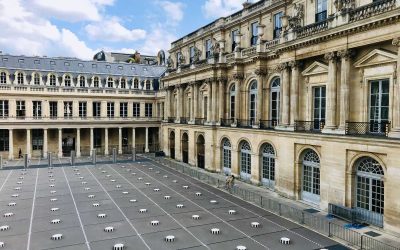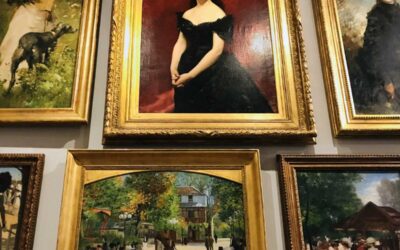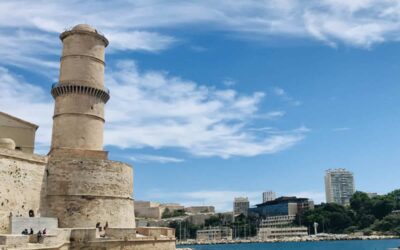Paris is known as one of the most romantic cities on earth, but it’s much more than that. Located in the heart of Western Europe, it is also a treasure trove of history.
Stretching back into the centuries, from the Celtic Gauls and Romans to the Revolutions and World Wars, Paris has seen its fair share of bloodshed. From the good times to the bad, here are the major events in Paris’s history that have shaped the city that it is today.
- 1. The original settlement in Paris dates back to 8000 BC.
- 2. Paris is named after the Parisii, a Celtic tribe.
- 3. When the Romans conquered Paris, it became Lutetia.
- 4. Saint Genevieve became its protectrice.
- 5. Paris becomes a cultural capital under Clovis, the First King of the Franks.
- 6. There were ancient walls surrounding the city.
- 7. King Charlemagne prefers Aix-la-Chapelle.
- 8. Paris becomes an economic powerhouse in the Middle Ages.
- 9. The Château du Louvre is built to protect trade.
- 10. Paris's Latin Quarter becomes a European Center of learning.
- 11. Saint King Louis IX brings the holy relics to Paris.
- 12. The Knights Templars are arrested and judged in Paris.
- 13. The Plague and 100 Years' War strike Paris.
- 14. François I makes Paris his official residence.
- 15. King Henry IV says "Paris is worth a mass" as he converted from Protestant to Catholic.
- 16. Pont Neuf is the oldest bridge in Paris.
- 17. Sun King Louis XIV's moves from Paris to Versailles.
- 18. Paris became the first city to install street lightening, earning the nickname City of Lights.
- 19. Parisians turn against the Monarchy and start the French Revolution.
- 20. Arc de Triomphe became a rallying point for French and foreign armies.
- 21. There is an extensive network of tunnels under the city called the Catacombs of Paris.
- 22. Many of Paris's classic buildings were designed by a man named Baron Haussman.
- 23. The Champs Elysées used to be rural countryside.
- 24. The Palais de l'Elysée becomes the official home of the French President
- 25. The Palais des Tuileries would be destroyed during the Paris Commune Protests.
- 26. The Eiffel Tower was supposed to be temporary.
- 27. Paris's Metro dates back to 1900.
- 28. The city was under attack in WWI.
- 29. Paris was occupied during WWII.
- 30. Paris today
1. The original settlement in Paris dates back to 8000 BC.
Archeologists have found the oldest hunter-gatherer settlement in Paris dating back to 8000 BC, in the 15th arrondissement on the Left Bank.
There are also traces of other settlements from 4000 BC that are today on display at the Carnavalet Museum in Paris.
2. Paris is named after the Parisii, a Celtic tribe.
During the Iron age between 250 and 225 BC, a sub-tribe of the Celtic Gauls, called the Parisii settled on the banks of the Seine.
They began to build a type of walled fort called an oppidum in the 2nd century BC, in the area. It is not entirely clear if this fort was in Île de la Cité, which is the historic center of Paris, or in nearby Nanterre which is about 12km west.
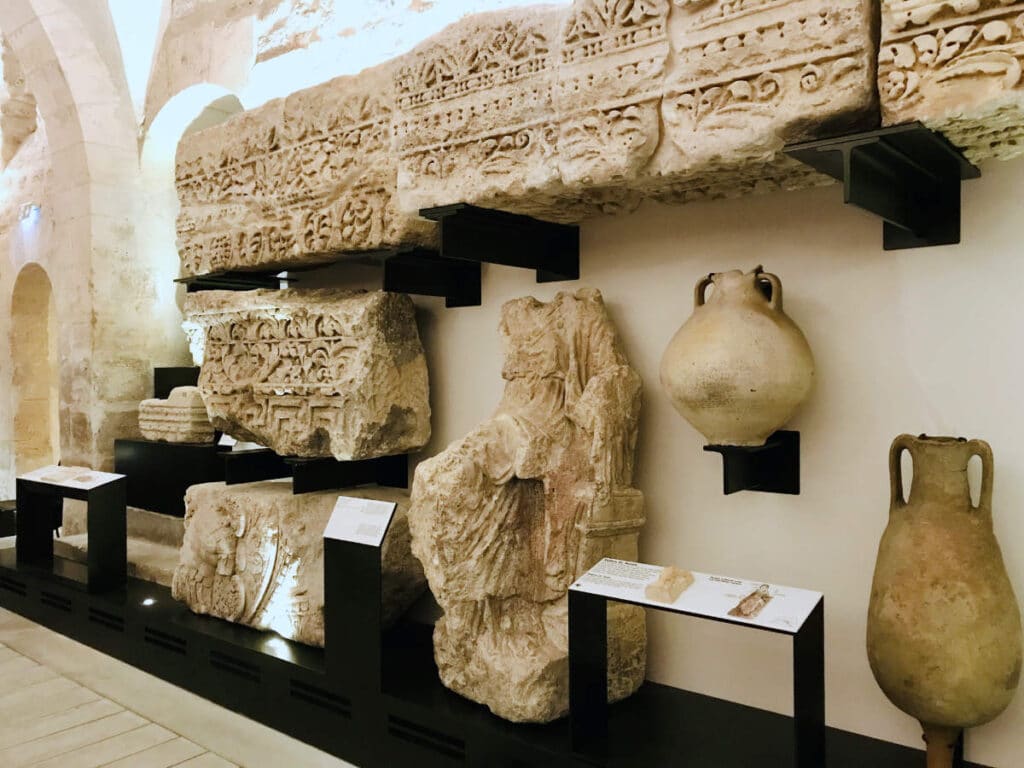
3. When the Romans conquered Paris, it became Lutetia.
In 58 BC, Julius Caesar and the Roman Empire conquered the region. They changed the name of Paris to Lutetia, building a city on banks of the river Seine, in what is today Ile de la Cité. It was not the biggest city in Roman times, that honor went to Lyon, which was then the capital called Lugdunum.
At the time, Paris was rather unimportant, behind Lyon and the port city of Marseille (called Massilia). Little Paris was, at the time, a tiny dot on the map. Literally.
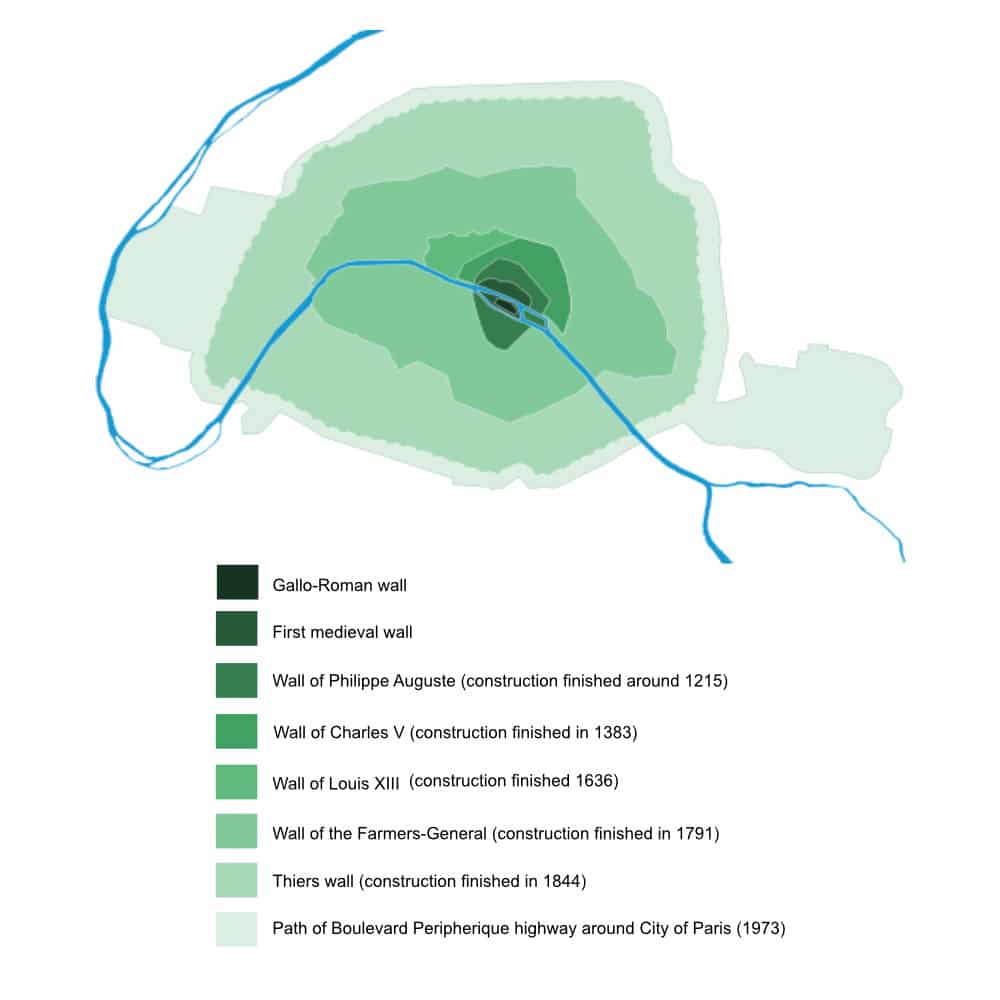
If you wander around the 5th arrondissement and Ile de la Cité within Paris, you can still see the ancient walls and the Arènes de Lutèce.
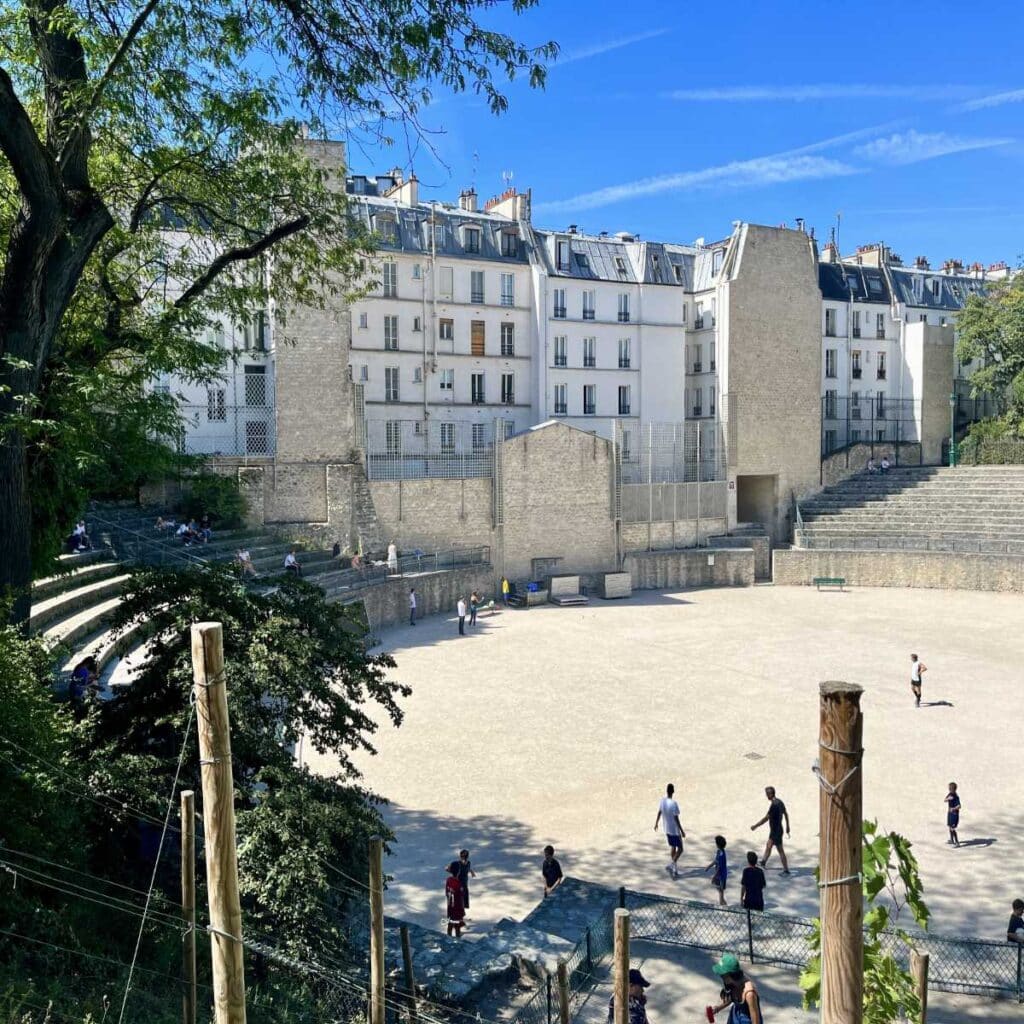
Along with the Thermes de Cluny, the Arènes de Lutèce are among the visible ruins and reminders of the Gallo-Roman period still visible in Paris.
4. Saint Genevieve became its protectrice.
By the 5th century, Roman empire was gradually decreasing in influence due to the increasing Frankish invasions (a Germanic tribe). At the time, lived an ordinary woman from Nanterre, called Genevieve who saw God and became a nun at 15. She would slowly become renowned for her piety and her visions.
In 451 AD, the city was threatened by the army of Attila the Hun, which had pillaged Treves, Metz and Reims. Parisians were planning to abandon the city, but they were persuaded to resist by Geneviève who led a prayer-marathon to divert the Hun army.
When the Huns diverted to Orléans instead, Geneviève was proclaimed a heroine. During subsequent attacks and sieges, it was Geneviève who would negotiate between the armies, looking out for the people of Paris.
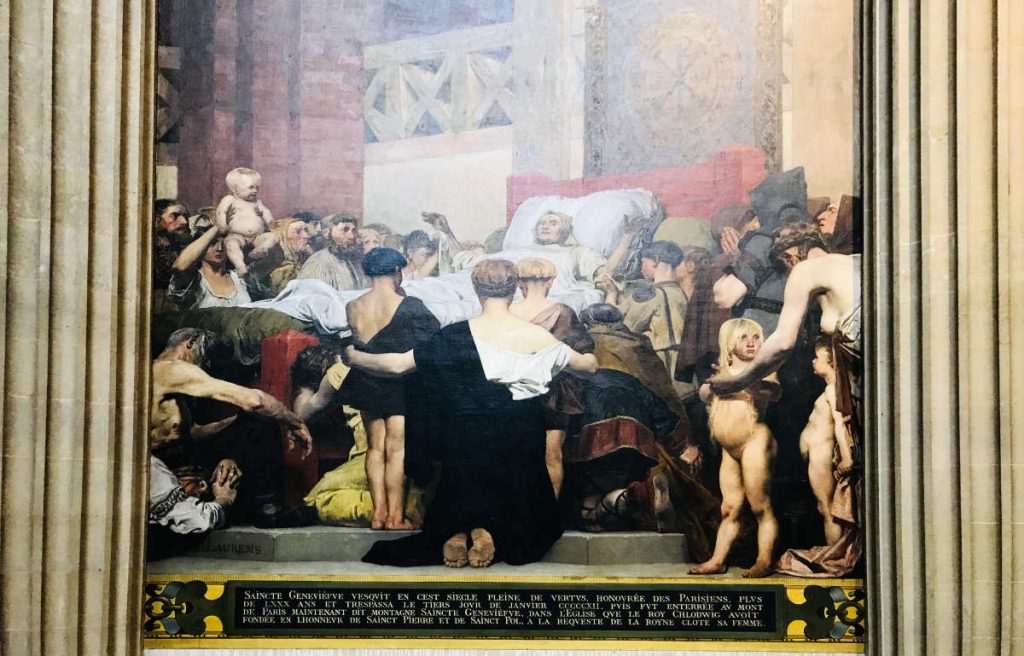
She would go on to counsel Clovis I, the first King of France to convert to Christianity and make Paris his base. Cannonized after her death, Saint Genevieve is even today considered the patron saint and protectrice of Paris.
The Panthéon in Paris was originally intended to be a temple dedicated to her. While the Pantheon ended up being converted into a tribute for the great thinkers and visionaries of France, there is a church dedicated to her in Paris.
Located on the Montagne Sainte-Geneviève next to the Panthéon, is the Saint-Étienne-du-Mont church which replaced an earlier church in the 5th century. It is here that Sainte Geneviève was reburied.
According to tradition, Saint Geneviève used to come there to pray and taking a path that became rue de la Montagne-Sainte-Geneviève. There are statues of her in several locations around Paris, including one in the city’s town hall.
5. Paris becomes a cultural capital under Clovis, the First King of the Franks.
Clovis I was the first king of the Franks to unite all of the Frankish tribes under one ruler in 481 AD. He conquered the nearby Kingdom of Soissons, which was previously a capital. Clovis ensured that the monarchy was passed down to his heirs, as part of the Merovingian dynasty in France.
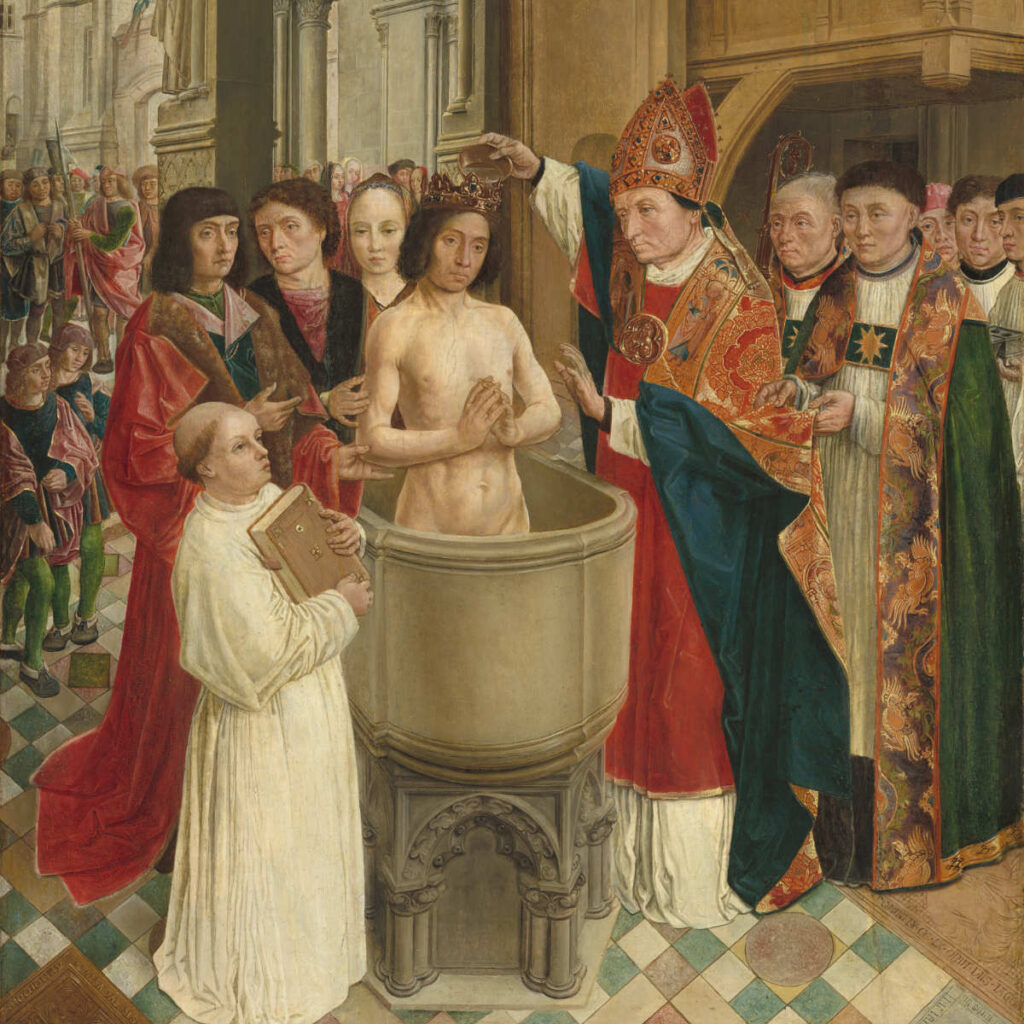
Legend has it that Mary Magdalene had arrived in Provence, bringing Christianity to France. By the time Clovis became King, people in that era were starting to believe in Christ.
Clovis is the first French King who converted to Christianity on the urging of Genevieve and his wife Clothilde (who is also proclaimed a saint for this act). It is Clovis I who establishes Paris his capital in 508AD, because of its strategic position on the River Seine.
This was the center for the Frankish kings, eventually settling outwards in the Ile-de-France.
6. There were ancient walls surrounding the city.
Paris used to be surrounded by city walls that gradually expanded (as per the map above). You can see where the borders of Paris used to be in the street names, which have the word “faubourg” in it. It is an indication that the area used to be outside of Paris city walls.

Today Paris is not surrounded by walls, but a giant highway. Perhaps one of the most disliked highways in France, it is called the Boulevard Péripherique. This 6 lane highway completely surrounds the city, cutting it off from its suburbs, prevent any city expansion.
7. King Charlemagne prefers Aix-la-Chapelle.
By the 8th century, it is King Charlemagne on the throne, expanding his kingdom east to include Alsace and the area that is now Germany.
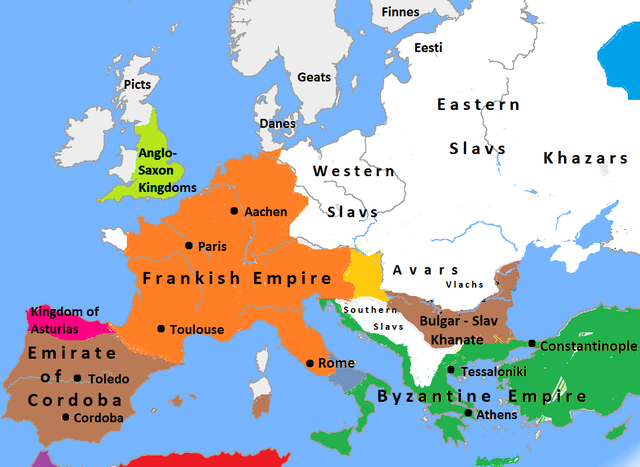
Paris is no longer as central and loses its importance as the capital is moved to Aix-la-Chapelle (today in German territory known as “Aachen”).
However, Charlemagne’s sons would begin squabbling after his death, and the territories would soon be divided again.
Although Paris was not the capital, several important buildings like the Cathédrale Saint Denis, the royal palace on the Île de la Cité began construction during this era.
8. Paris becomes an economic powerhouse in the Middle Ages.
It became the main residence of Hugh Capet, King of the Franks in the 10th century, becoming a major economic powerhouse on the Right Bank, with the trade of wheat, fish and cloth along the river.
A large market was founded in 1110 called the Marché les Halles in the center of what is today the 1st arrondissement of Paris. (The food market has now been moved outside the city to the town of Rungis on the south side.) Today, the area is a large mall and metro station known as Chatelet-Les Halles.
9. The Château du Louvre is built to protect trade.
With wealth came the raiders, and in 1190 construction began on a fortress that would become the Château du Louvre under French King Louis Auguste.
The fortress was intended to defend against one of the traditional routes taken during invasions and raids since the time of the Vikings.
Its location on the Right bank of the Seine river was across from the older part of Paris, the Latin quarter in the 5th–6th arrondissements.
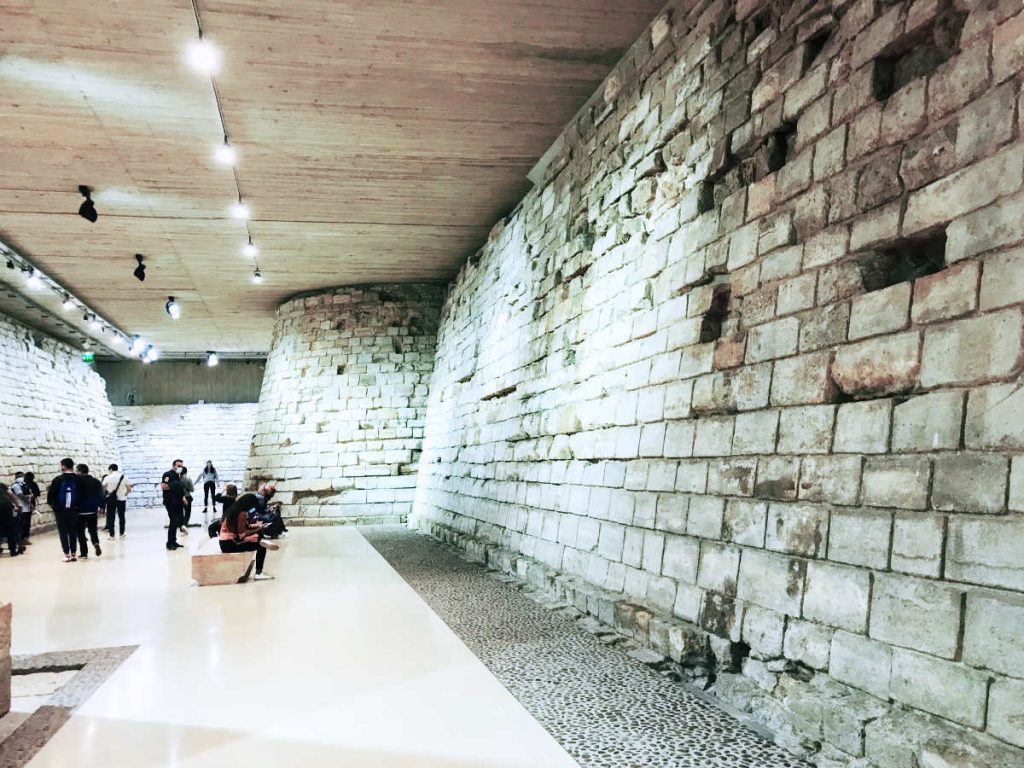
In the center was a large tower, known as the Grosse Tour du Louvre, protected by a series of outer walls and towers. In addition, it was protected by a large moat 10m wide, that were filled with water from the Seine. You can still see a portion of these old walls in the Sully Wing of the Louvre Museum.
Subsequent kings during the Middle ages would expand the fortress, using the Louvre as a royal residence, a prison, a place for keeping the treasury, and even for a library. You can read more about the history of the Louvre here.
In addition, more new construction started on Ile de la Cité, including the Notre Dame de Paris and Sainte Chapelle.
10. Paris’s Latin Quarter becomes a European Center of learning.
During the 12th and 13th centuries, several universities popped up on the Left Bank of Paris, including the University of Paris (Sorbonne).

Paris became one of the principal centers of learning in Europe with students and scholars coming to the city from England, Germany and Italy to teach and be taught.
The area became known as the Latin Quarter, for the students studying and speaking in Latin there, which was the lingua franca at the time for nobility and the educated.
11. Saint King Louis IX brings the holy relics to Paris.
As Paris was prospering, the royal palace known as Palais de la Cité on Ile de la Cité was also undergoing construction.
In 1239, French King Louis IX had brought back the Crown of Thorns and other holy relics from the Crucifixion of Christ to France from Constantinople (today known as Turkey).
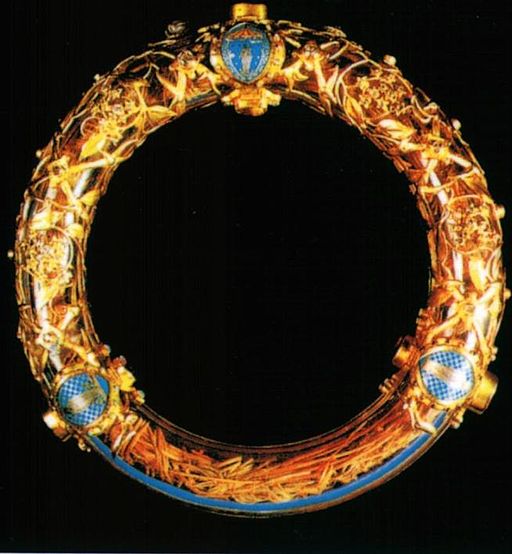
King Louis IX needed a place to showcase his new prized possessions and Saint Chapelle was built in order to hold the holy relics. He would later be canonized as Saint King Louis IX for this act and is one of the most well-known saints in France.
The Crown of thorns was thought to have been purchased for around 135,000 livres in 1239, which at the time was about 1/2 of the annual income of France.
The relics were stored in a large and elaborate silver chest, the Grand-Chasse, on which Louis spent a further 100,000 livres. The construction of the Sainte-Chapelle cost much less, around 40,000 livres.

Sainte Chapelle is considered one of the most important monuments of Medieval art in Paris.
12. The Knights Templars are arrested and judged in Paris.
At dawn on Friday, 13 October 1307, The French King Philip IV ordered the simultaneous arrest of the Order of the Knights Templar that were in France.
The Grand Master Jacques de Molay in Paris and other Templar leaders were accused of heresy and obscene practices.
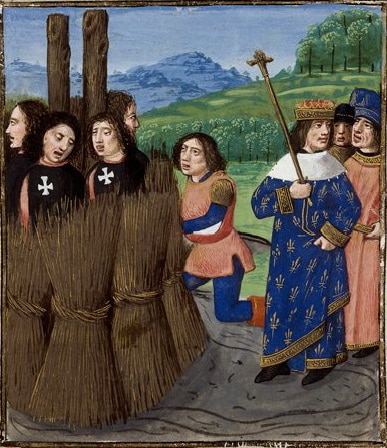
Once Philippe de Bel had the Templars arrested, he needed a show trial. Following a mock trial that was already predetermined, Jacques de Molay was executed in March 1314.
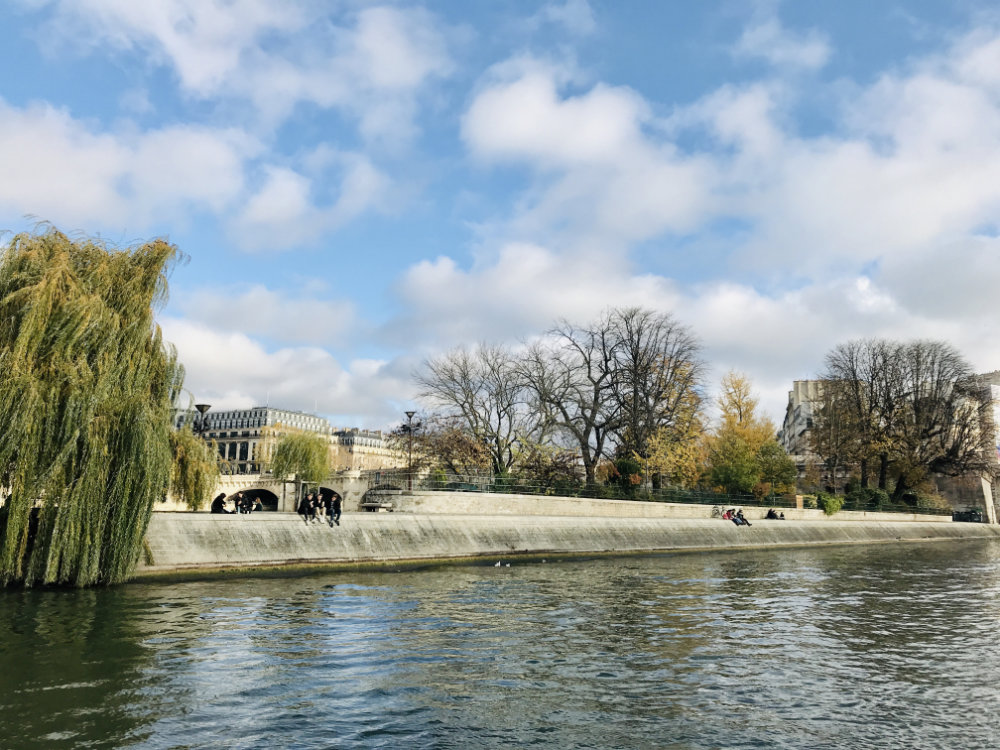
He was burnt at a stake erected on the Ile aux Juifs in Paris, which was later renamed Ile des Templiers. It is now part of Ile de la Cité, as the islands were connected at the same time the Pont Neuf Bridge was built in 1607.
13. The Plague and 100 Years’ War strike Paris.
The 14th century was not kind to Paris. The city was struck by two great catastrophes: the Bubonic plague and the Hundred Years’ War against the English.
During the recurring plagues, 40-50,000 Parisians died, almost a quarter of the population.
In the midst of all that was the 100 years’ war which actually lasted from 1337 to 1453, with 5 generations of French and English kings (who were all related to each other) competing over the French throne.
In 1420, Henry V of England would enter Paris and convince the locals that the English were more sympathetic to their struggles. A young maid named Jeanne d’Arc (Joan of Arc) would attempt to overturn their support in favor of French King Charles VII.
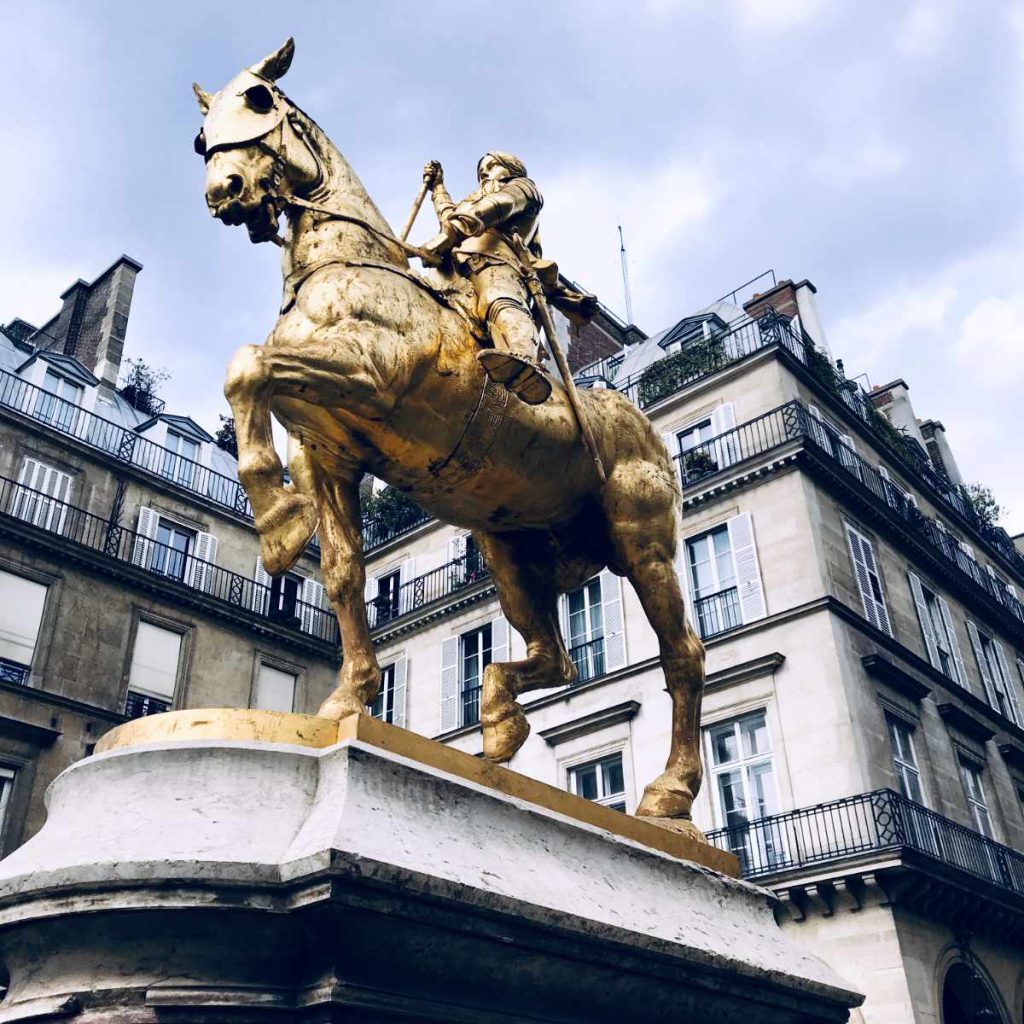
Joan of Arc would lead the French army and the Scottish Auld Alliance to lay siege to Paris in 1429. The Siege would not last long, with Joan of Arc wounded just outside the Porte Saint-Honoré (today Rue Saint Honoré), the westernmost fortified entrance of the city walls, near the Louvre.
On 16 December 1431, Henry VI of England, at the age of 10 years, was crowned King of France at Notre Dame cathedral. The French King only ruled the part of France that was south of the Loire River. The English did not leave Paris until 1436, when French King Charles VII was finally able to return.
When the French monarch did return, he saw that many areas of Paris were in ruins. Historians estimate that approximately a 100,000 of its inhabitants, half the population, had left the city or died.
Paris once again became the capital of France, however, most of the French monarchs preferred to live in the Loire Valley which had proven to be so loyal.
14. François I makes Paris his official residence.
In 1528, French King François I finally decided to make Paris his official residence. He decided on the Louvre as his home, and brought down the Grosse Tour du Louvre in his push to bring the Louvre up to Renaissance standards.
The Château Amboise in the Loire where he grew up and Château de Fontainebleau outside of Paris however, remained his favorite abodes.
François I also started acquiring artworks from across the continent, and with it, famous artists. Paris was now becoming a cultural center for art that would attract the great artists and painters of the Renaissance.
François offers to host the Italian Master Leonardo da Vinci, giving him a stipend and lodging near his childhood home in Amboise.
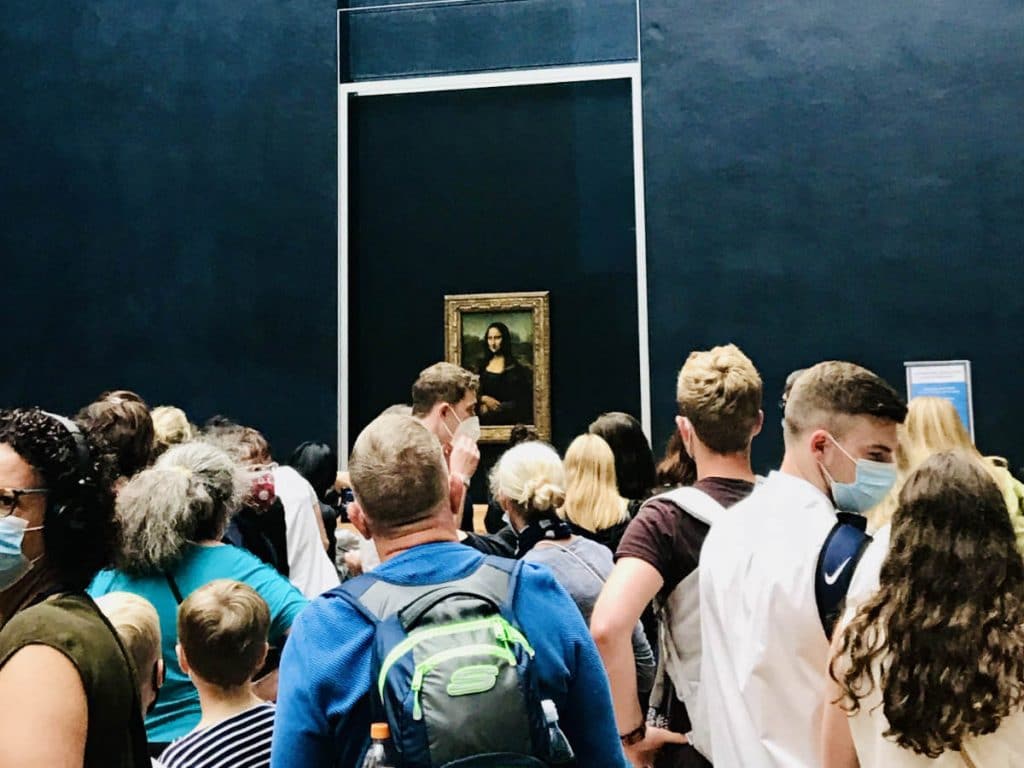
Da Vinci moved to France at the age of 64, arriving with chests full of notes and sketchbooks, along with 3 of his most famous paintings, the Mona Lisa, Virgin and Child with St. Anne and St. John the Baptist.
After Da Vinci died, many of his possessions became property of the royal family, which is how they ended up staying in France and on display at the then newly-renovated Louvre Museum.
In addition, after François I’s son (Henri II) died, his wife Catherine de Medici would begin building a new palace just steps away from the Louvre, the Palais de Tuileries. Subsequent monarchs would attempt to attach the two buildings.
15. King Henry IV says “Paris is worth a mass” as he converted from Protestant to Catholic.
By the 16th century, Paris had regained its former prosperity and its population. Now around 250,000 strong, there was no question of its power and influence.
A problem was on the horizon, however. With all the male heirs of the French King dead, it was his daughter Marguerite and her husband Henri of Navarre who was were in line to the throne.
Henri is protestant, and marrying Catholic Marguerite would lead to one of the most brutal massacres in French history, which takes place in Paris directly outside the Louvre Palace a couple of days their wedding.
With the bride and groom staying at the Palais du Louvre, both Protestants Huguenots and Catholics had descended on Paris to be present at the marriage.

Alarmed that Protestant Henri was now in line to the throne of France, the Parisians would turn on 3,000 huguenots gathered.
Henri of Navarre would attempt to find a solution against the Catholic League of Paris.
He even attempted brute force, laying siege to the city. The siege was long and unsuccessful. Finally, Henri agreed to convert to Catholicism, with the famous words:
“Paris is well worth a mass.”
Henri of Navarre (King Henri IV of France)
Looking around the other cathedrals in France, he was finally crowned King of France at the Cathedral of Chartres on 27 February 1594, and was allowed to enter Paris on 14 March 1594. Introducing many reforms, he became known as “Good King Henri”.
However, his marriage to Marguerite was annulled. Henri’s 2nd wife, Maria de Medici would start building the Palais du Luxembourg and its beautiful gardens in the 6th arrondissement as her base.
Surviving many other assassination attempts, Henri IV was finally killed in Paris on 14 May 1610 by a Catholic fanatic, who stabbed him on the Rue de la Ferronnerie.
16. Pont Neuf is the oldest bridge in Paris.
The oldest bridge in Paris is the Pont Neuf constructed in 1607, which as you would have it, translates as “New Bridge”.
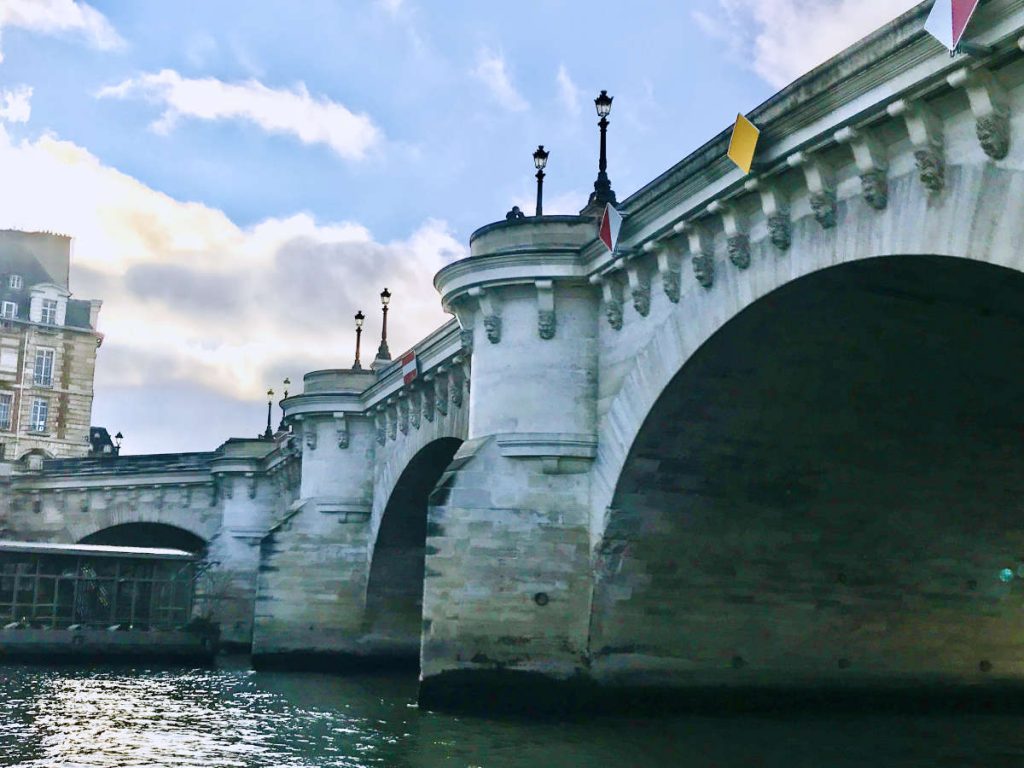
It was built by the aforementioned King Henri IV. You can read more about him and other members of the French royal family here.
17. Sun King Louis XIV’s moves from Paris to Versailles.
When Sun King Louis XIV ascended to the throne, he was merely 4 years old. It was a tumultuous time known as the Fronde, with nobles at the time contesting his mother Anne, who was Regent.
At one point, the 12-year old Louis and his mother were held prisoner at Palais Royal in Paris until they conceded to the demands of the frondeurs. This made Louis detest and distrust Paris. But he nonetheless, moved into the Louvre Palace as an adult and started making renovations.
He did however start looking for a new power base, and settled on the family’s old hunting lodge: Versailles which was a couple of hours away from Paris by horse.
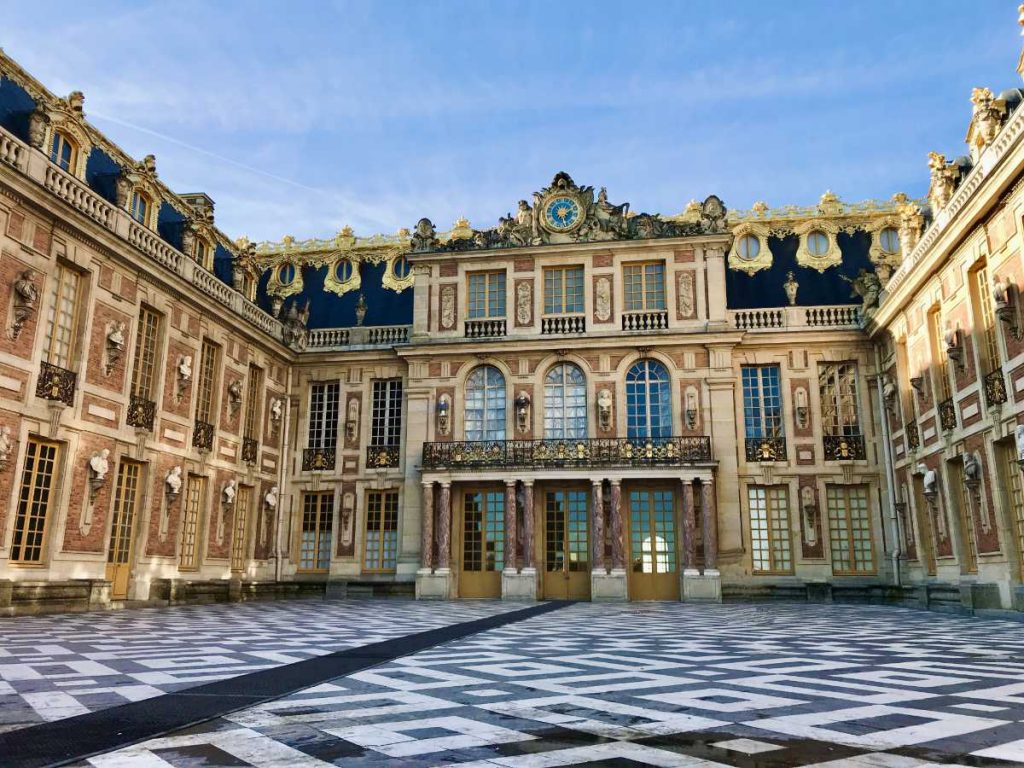
Louis XIV set about on a grand construction project to build what we know today as the Palace of Versailles. It was inspired by several other chateaux that were coming up around Paris at the same time, like Vaux le Vicomte and Chantilly.
By the 1670s, Louis XIV directed all his construction budget from the Louvre to the Château de Versailles, which would become his official residence as well as that of his descendants. You can read more about the history of the Palace of Versailles and other facts here.
18. Paris became the first city to install street lightening, earning the nickname City of Lights.
Paris is called “the City of Lights” because it was the first major city in Europe to install street-lighting under King Louis XIV in 1665. The city was dark and unsafe and thus lantern lighting was installed to make it safer.
It was also one of the first cities to have widespread street lighting by gas in 1820 and later electric lighting in the late 19th century. The City of Lights, indeed.
19. Parisians turn against the Monarchy and start the French Revolution.
On 14 July 1789, Parisians marched and overran an ancient fort, called La Bastille, that housed a prison on the east side of Paris. The storming of the Bastille would signal the start of the French Revolution.
On 5 October 1789, the French people marched to Versailles, and made the Royal Family return to Paris as their prisoners. Louis XVI, Marie-Antoinette, and their children would never return.
The period after became knows as La Terreur when over 25,000 were massacred, sentenced to death, or underwent “street justice”, including several members of the Royal court.
With its cadre of intellectuals and philosophers, the revolutionaries started to issue new edicts including creating the metric system as well as a non-religious French revolutionary calendar.
In addition, many street names across Paris were changed, statues destroyed, and churches and palaces ransacked. Several monuments and buildings were and nationalized to remove any vestige of royalty and nobility, including the Louvre which officially became a museum.
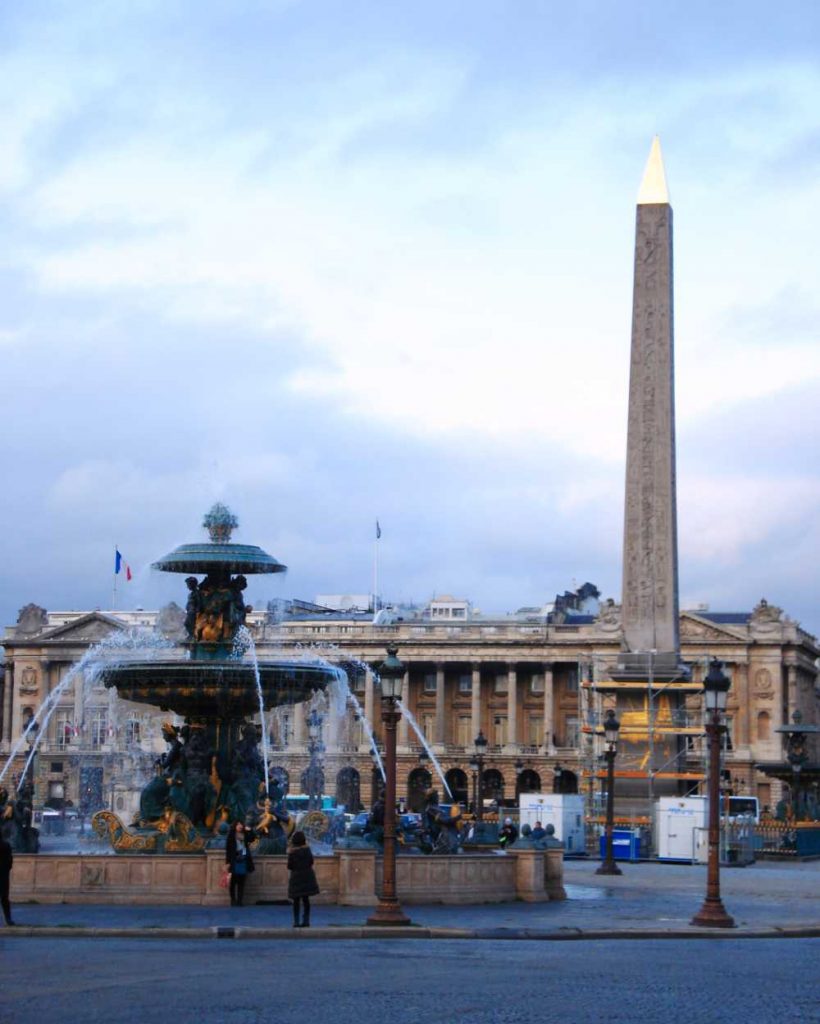
The King and Queen Marie-Antoinette were beheaded at Place de la Concorde in Paris in 1793. Their heads were shown to the blood-thirsty Parisian crowd, who responded by crying: “Vive la République!”
Today, however, you will notice a different type of monument in the center of Place de la Concorde: a giant Egyptian obelisk decorated with hieroglyphics noting the reign of the pharaoh Ramesses II. It was given as a gift in 1829 from Egypt to France, and acts as a sundial.
☞ READ MORE: French Revolution walking tour of Paris
20. Arc de Triomphe became a rallying point for French and foreign armies.
By 1800, a previously unknown Corsican named Napoleon Bonaparte would be firmly in charge of Paris and France. After rising through the ranks, he gets himself crowned Emperor.
Napoleon was not content however, just being the Emperor of France. He went on to traverse the Alps conquer and pillage large parts of Italy, Austria, Egypt, and other parts of Europe and Africa.
The Arc de Triomphe on the Champs Elysées, as well as a 2nd one that is standingin front of the Louvre, were both commissioned by Napoleon Bonaparte in 1806 to commemorate his victories.
His defeat by the British meant that he never saw it finished. It was finally completed in 1836, and become a rallying point for both French and foreign armies.
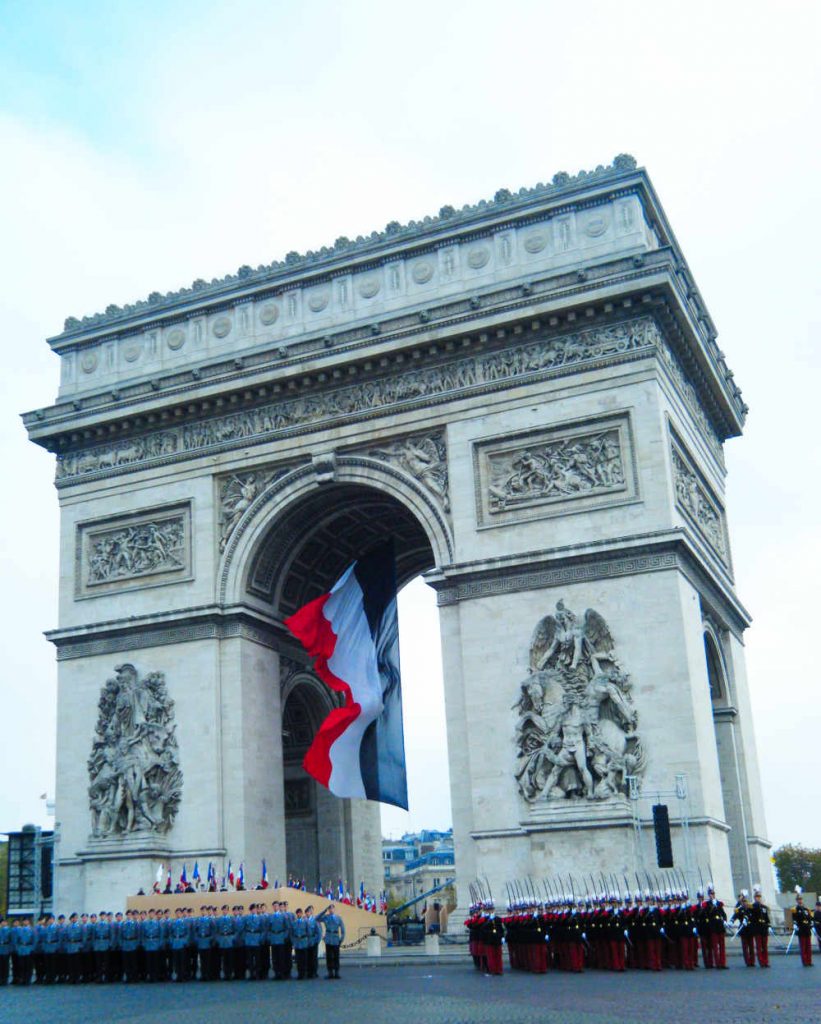
Along with festivities every 14 Juillet (Bastille Day), famous victory marches around or under the Arc de Triomphe include:
- the Germans in 1871 – Franco-Prussian war
- the French in 1919 – WWI
- the Germans in 1940 – the invasion of France at start of WWII
- French and Allied Forces in 1944-45 – end of WWII
Napoleon also began construction of Rue de Rivoli, from the Place de la Concorde to the Place des Pyramides. He also gave Paris three of its bridges, the Pont des Arts, Pont d’Austerlitz, and the Pont d’Iéna. (The latter two are named after his victories in Europe.)
21. There is an extensive network of tunnels under the city called the Catacombs of Paris.
Catacombes de Paris is a tunnel network beneath the streets of Paris, and the final resting place of over 6 million people.
When old cemeteries and burial grounds dating back to the Franks, Romans, and medieval age started falling apart, the graves were moved here starting in 1810, stacked in rows and piles.
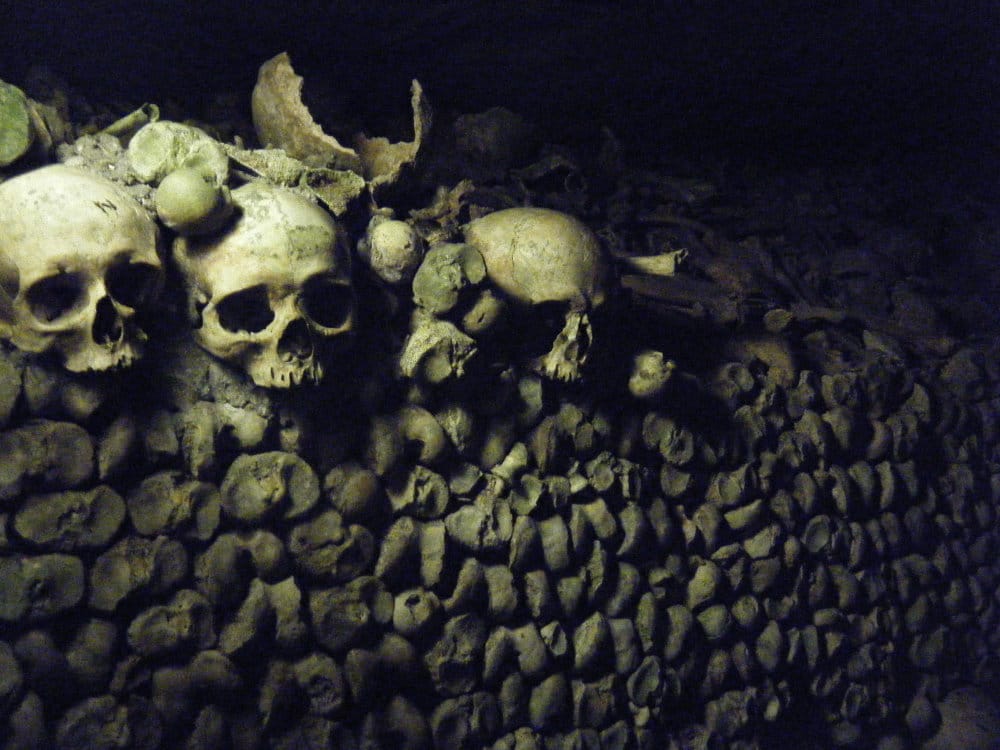
During World War 2, the Catacombs were utilized by the French Resistance who required the tunnel system to travel back and forth.
Today, going into the catacombs is banned because people have been known to get lost there. However, there is a portion in the 14th arrondissement that is reserved as a museum so that tourists can visit.
22. Many of Paris’s classic buildings were designed by a man named Baron Haussman.
By the time Napoleon Bonaparte’s nephew Napoleon III came to power in 1848, Paris was unsafe and overcrowded.
Paris had a population of about one million people, most of whom lived in crowded and unhealthy conditions. With narrow medieval buildings and sewage being dumped into the Seine, the city also had a cholera epidemic.
Napoleon III hired an architect, Baron Haussman to knock down the medieval neighborhoods and replace them with the grand boulevards and elegant buildings you see in the city today.
This style of architecture is called Haussmannian, and there were several rules associated with it. From the height of the ceiling, to the moldings and balconies outside, there is a very specific look to it.
Parisians hated it, as old neighborhoods all over Paris were destroyed to make way for the new Hausmmanian style that catered to the rich bourgeoisie.
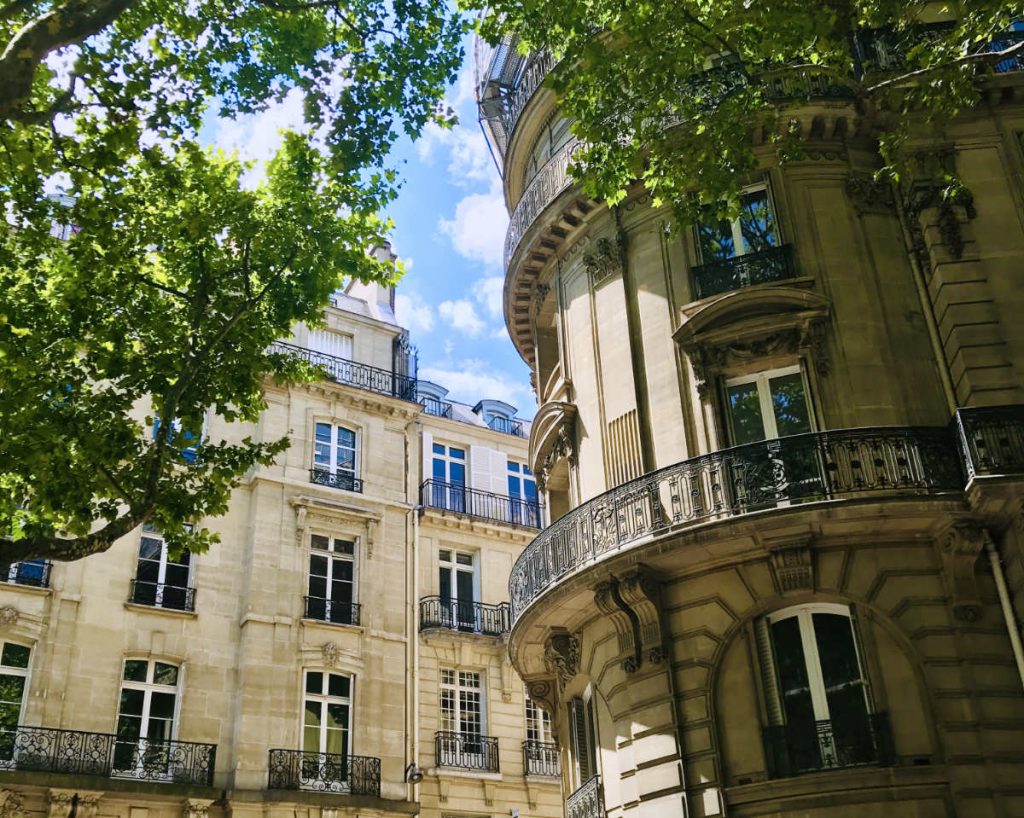
In addition to the look, the French regulations require that residential buildings in Paris cannot be higher than 50m, while commercial buildings no higher than 180m.
With the highway around Paris, this means that Parisians cannot build up nor out. The lack of space for housing, makes Paris one of the most expensive cities in the world to live in, as prices and the cost of living go higher.
Along with these rambling boulevards and beautiful architecture, Napoleon III also ordered the construction of four large new parks at each end of the city:
- Bois de Boulogne in the west
- Bois de Vincennes in the east
- Parc des Buttes-Chaumont in the north
- Parc Montsouris to the south,
He also put in many smaller parks and squares around the city, so that no neighbourhood was more than a ten-minute walk from a park.
23. The Champs Elysées used to be rural countryside.
The Avenue des Champs Elysées used to be rural countryside until the 17th century. It was not until the late 18th century when Napoléon III and Baron Haussman completely reconstructed Paris, that the broad tree-lined boulevard that we know today as the fashionable Champs Elysées came into being.
24. The Palais de l’Elysée becomes the official home of the French President
At the same time, the Palais de l’Elysée, just a few 100 meters away from the Champs Elysées, became the official residence of the President of France during the Second Republique under Napoleon III in 1848. (He would later become Emperor and move into the Tuileries palace opposite the Louvre.)
The Elysée was initially purchased by King Louis XV in the 1700s as a residence for his mistress, the Madame de Pompadour. At the time it was considered a “country house” west of Paris, which is why the property is so large. After her death, it reverted back to the crown, and then changed hands several times.
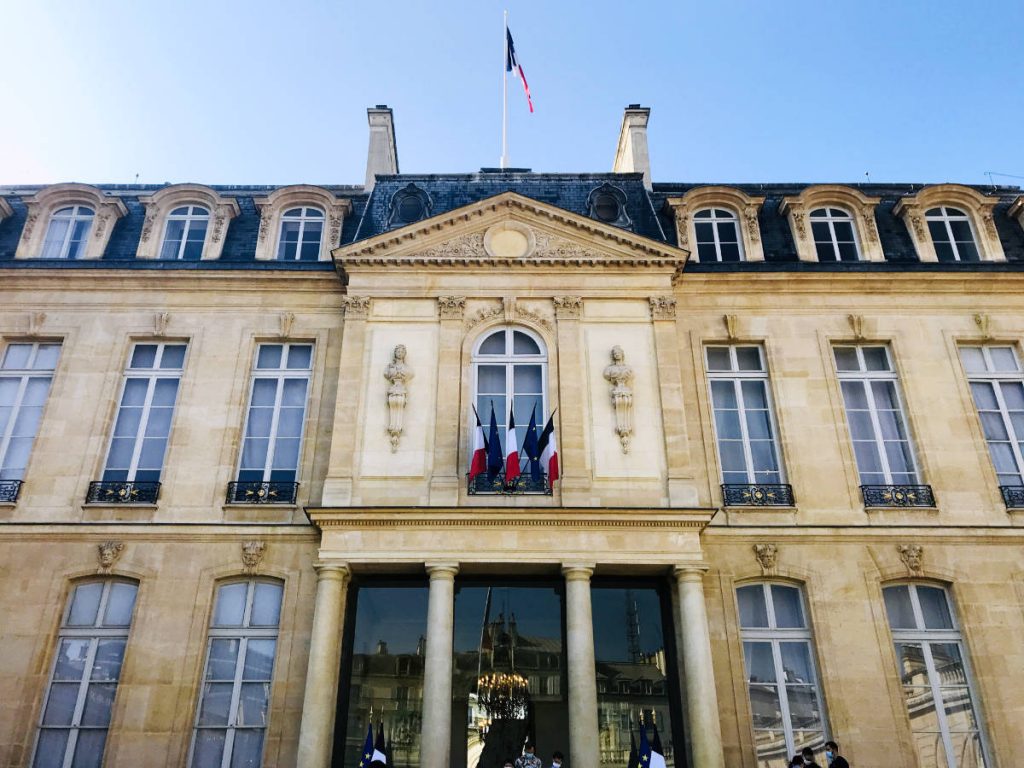
The house was confiscated during the French Revolution in 1789, but luckily for us, not destroyed.
After Napoleon Bonaparte came to power, his sister Caroline Bonaparte and her husband Joachim Murat, purchased the property. But it would take his nephew to turn it into the center of French politics that it is today.
25. The Palais des Tuileries would be destroyed during the Paris Commune Protests.
Like his uncle Napoleon Bonaparte, Napoleon III also was defeated and dethroned after a battle in 1870, this time against the Prussians (Germans). He was exiled to England, leaving France in turmoil.
In March 1871, during the establishment of the Third Republic, soldiers of the National Guard seized control of the city and attempted to establish an independent government (apart from France).
The Commune governed Paris for two months, establishing policies with a progressive, feminist and socialist agenda. However, the Commune was eventually defeated by the national French Army during La semaine sanglante (“The Bloody Week”) beginning on 21 May 1871.
Between 6,000 and 7,000 Communards are confirmed to have been killed in battle, and some unconfirmed estimates are as high as 20,000.
In addition, the Tuileries Palace that was attached to the Louvre, was burnt down during the Paris Commune protests in 1871.
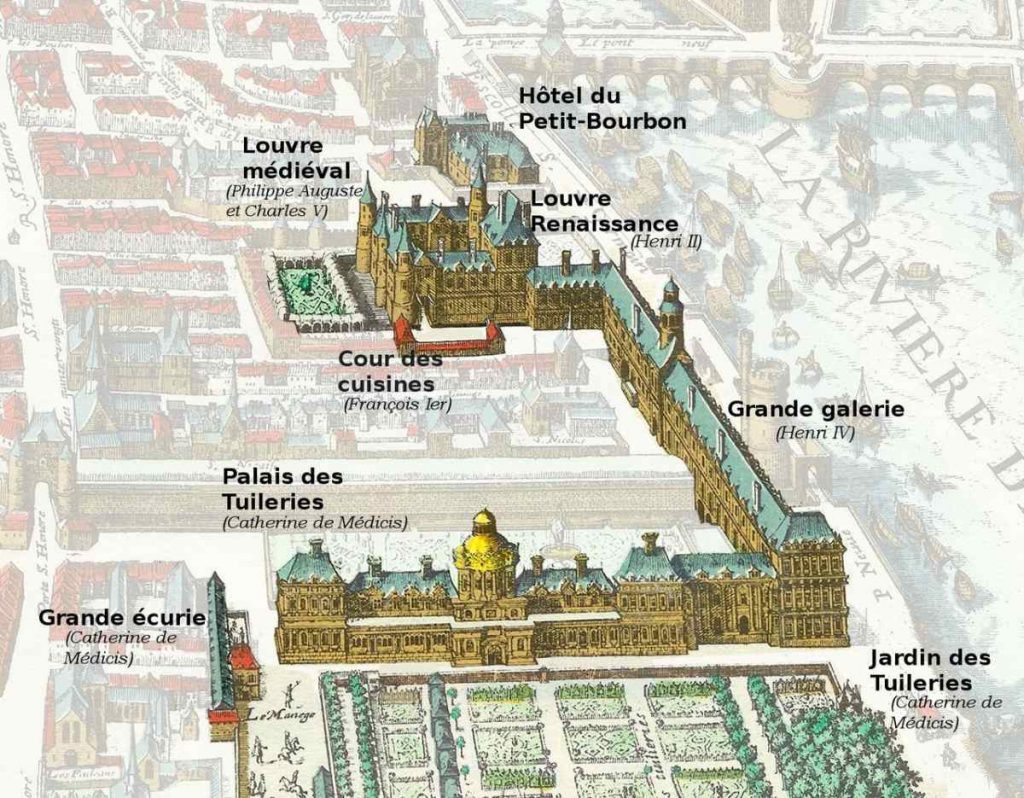
The Palais des Tuileries were never rebuilt and is today a garden known as Jardin des Tuileries. The Louvre museum was saved by the efforts of Paris firemen and museum employees led its curator Henry Barbet de Jouy.
However, the emperor’s Louvre library (Bibliothèque du Louvre) and some of the adjoining halls, in what is now the Richelieu Wing, were separately destroyed.
26. The Eiffel Tower was supposed to be temporary.
Built for the 1889 World Fair that was held in Paris, the Eiffel tower was supposed to be dismantled within 20 years. Parisians initially hated it, wondering what this weird metal structure was supposed to be.
The Eiffel Tower is named after its engineer, Gustave Eiffel who was from the French city of Dijon. Eiffel was not just any guy. He had constructed several buildings, bridges and viaducts around France before the Eiffel Tower.
He was also just coming off of another large French project building the metal framework with sculptor Frédéric Auguste Barthold for the Statue of Liberty which opened in 1886.
A smaller version of the Statue of Liberty can be found a few 100 yards away from the Eiffel Tower in Paris on Pont de Grenelle. You can read more facts about the Eiffel Tower here.
27. Paris’s Metro dates back to 1900.
One landmark of Paris that the locals love and hate is the Paris metro. Stretching all across the city, like a labyrinth, construction of the metro begun in 1900, with work continuing as new lines and metro stations are added.
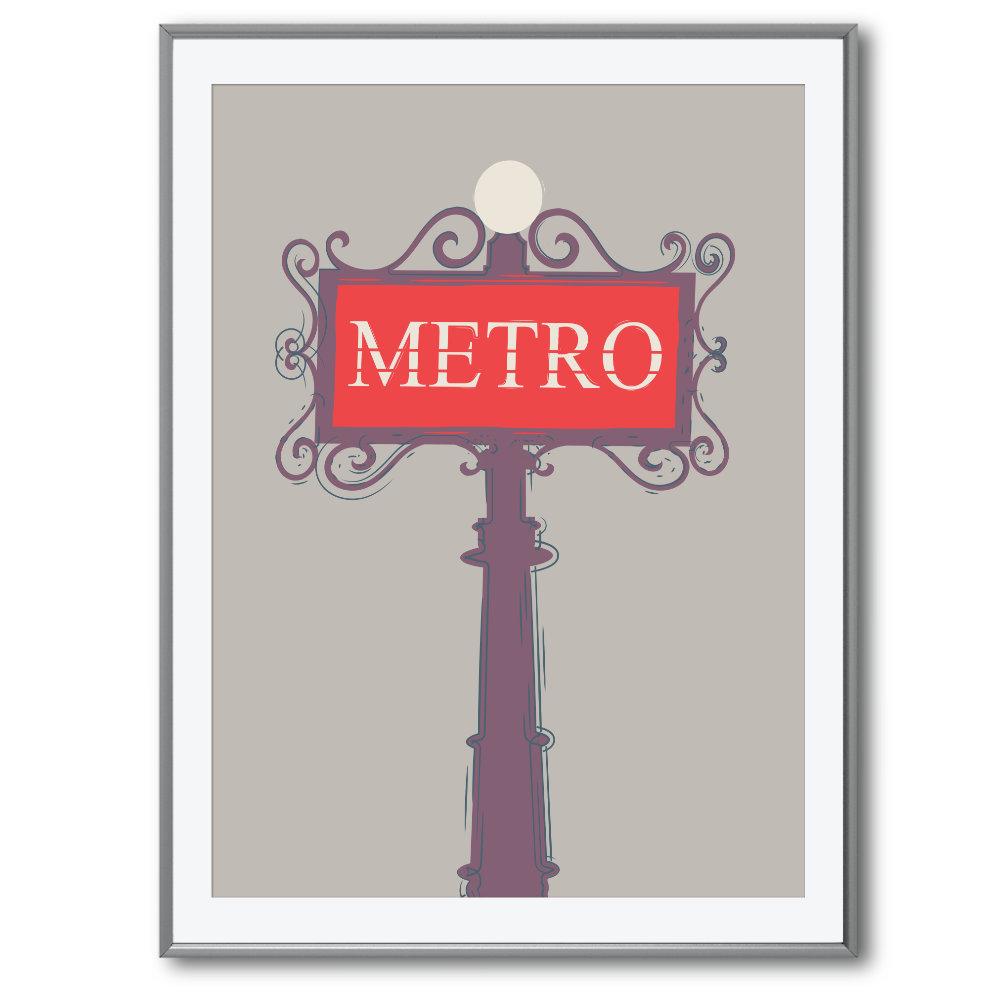
There are so many stations that a dozen or so are listed as as “abandoned” and are no longer served. Used for storage and maintenance, some are even rented out for film sets for productions set in Paris.
Only 3% of the Paris Metro is handicap and stroller friendly, compared to 25% for London and New York metros which are just as old. (So if you are planning to visit Paris with luggage, I recommend taking a taxi from the airport rather than the metro!). You can read more facts about the Paris metro here.
28. The city was under attack in WWI.
The city suffered greatly during WWI. Within a few weeks of the start of the war, by September 1914, the German Army had reached the Marne River just east of Paris. With the French government evacuated to Bordeaux, the Parisians continued to resist.
Famously, around 600 Paris taxi cabs were deployed to the Marne river carrying French soldiers to hold off the Germans until Allied reinforcements arrived.
However, between the bombings by German airplanes and epidemics of typhoid, measles and the Spanish influenza, thousands of Parisians died during the war.
Life in Paris was difficult during the war. Everything from gas, electricity, coal, bread, butter, flour, potatoes and sugar were strictly rationed. A huge crowd of Parisians would lined the Champs Élysées to welcome the Armistice and for a victory parades by the Allied armies.
29. Paris was occupied during WWII.
Following the German invasion of Poland in September 1939, France declared war on Germany.
In 1939, the man leading the French Government at the time was a celebrated war hero. Maréchal Philippe Pétain was the Commander-in-Chief who had led the troops during World War I and earned the respect of the French people. But by the time World War II rolled around, he was a tired old man.
The French government began to evacuate 30,000 children from Paris to the provinces, and major works of art of the Louvre and other museums were also evacuated to the Loire Valley.
In June 1940, Petain conceded to Hitler. And so began France’s Vichy Government collaboration with the German Reich.
The first German soldiers entered the French capital on June 14 and paraded down the Champs Élysées from the Arc de Triomphe. Hitler himself arrived on June 24, visited various tourist sites and paid homage at Napoleon’s tomb. He attempted to go up the Eiffel Tower, but found that the elevator had been cut.
During the Vichy regime, thousands of French Jews were rounded up and sent to Drancy, a town north of Paris, never to return. From there they were shipped out to concentration camps like Auschwitz.
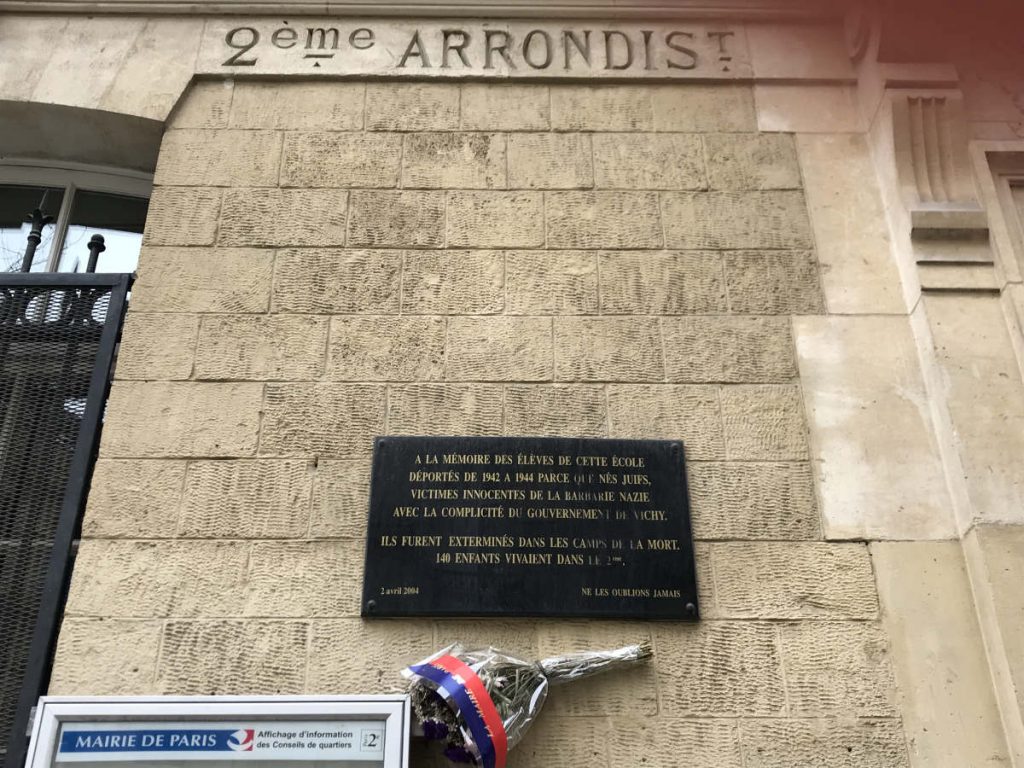
They would be exterminated in death camps. 140 children lived in the 2nd arrondissement.
We will never forget.
All across Paris and the surrounding area you can see plaques outside schools dedicated to the youngest victims.
By the war’s end he had left instructions that Paris was meant to be razed to the ground as German forces were retreating. However, the German commandant-in-charge declined to follow the order.
As such the majority of the city survived its 4-year occupation mostly intact. Fluctuat nec mergitur, meaning “Rocked, but not defeated”, as the city’s motto goes.
You can read more about the museums and monuments dedicated to the city’s history here.
30. Paris today
Post-WWII, Paris continues to be the center of government and the French Republic. From social unrest to terrorism, the city has often been a target of protesters and terrorist attacks.
From business leaders to tourists, the city continues to play an out-sized role attracting locals, foreigners, and industries into the area. The city today has around 2 million full-time residents, with another 10 million in the surrounding suburbs. You can read more about living in Paris today here.

If you enjoyed that article, you may want to read more interesting facts about Paris here. A bientôt!
